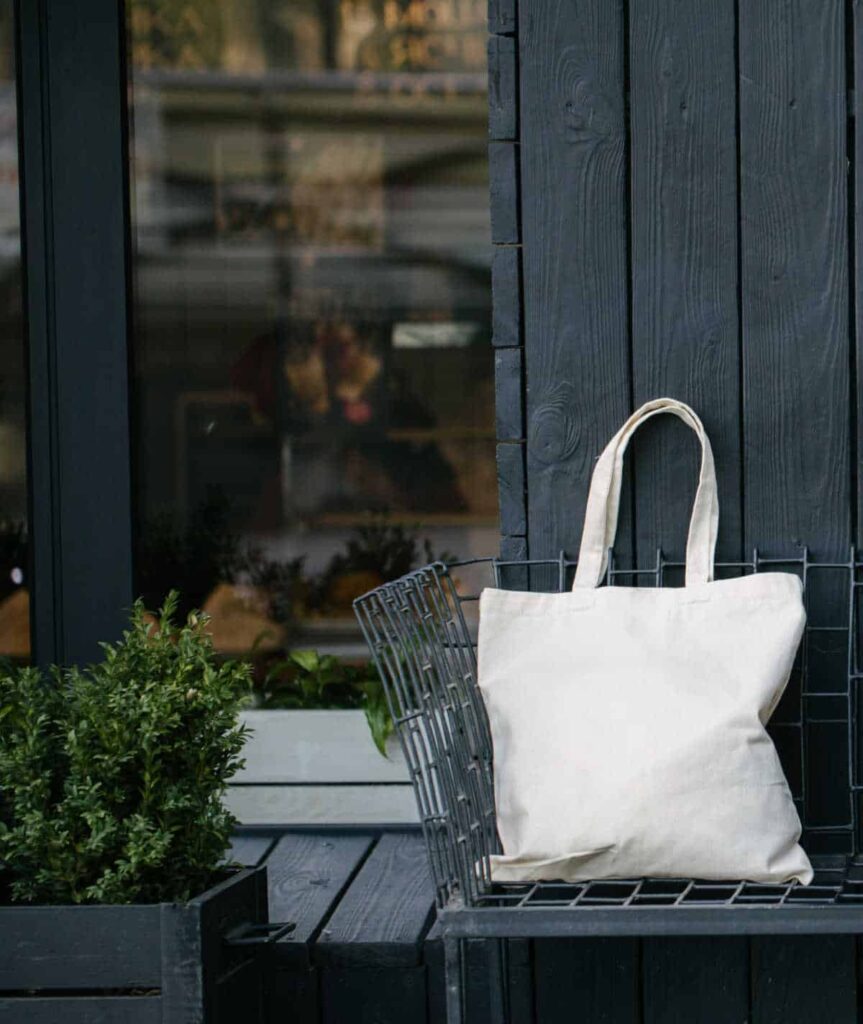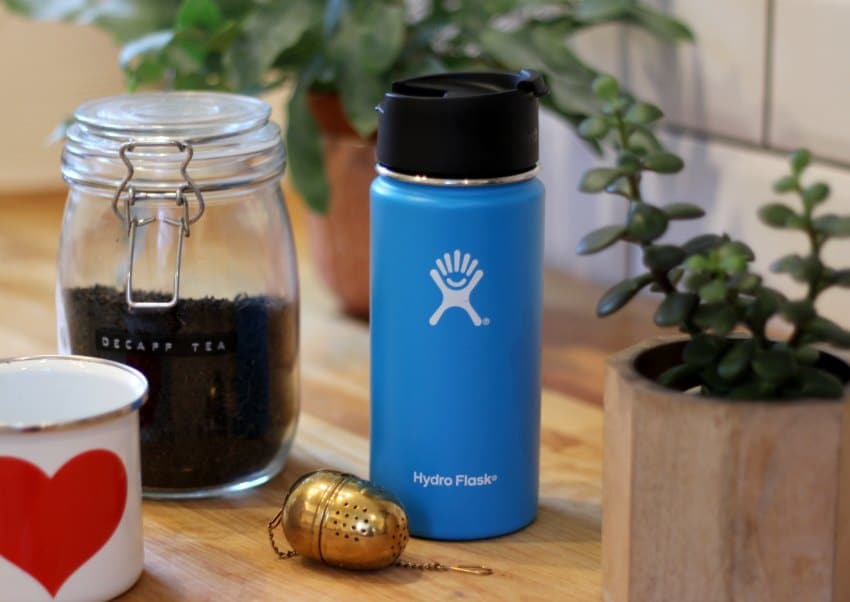How to Compost In A Flat When You Have No Garden
To support the running costs of Moral Fibres, this post contains affiliate links. This means Moral Fibres may earn a small commission, at no extra cost to readers, on items purchased through these links.
Looking for tips on how to compost in a flat when you don’t have a garden? Joy from Sustainable Jungle shares her top apartment-dwelling composting knowledge, to help you out.
Joy from the blog Sustainable Jungle is here today to share her composting experience with Moral Fibres readers. As a seasoned composter, despite living in a flat, Joy is keen to share her multi-pronged attack so that other apartment dwellers can learn from her composting experience:
How We Started Composting
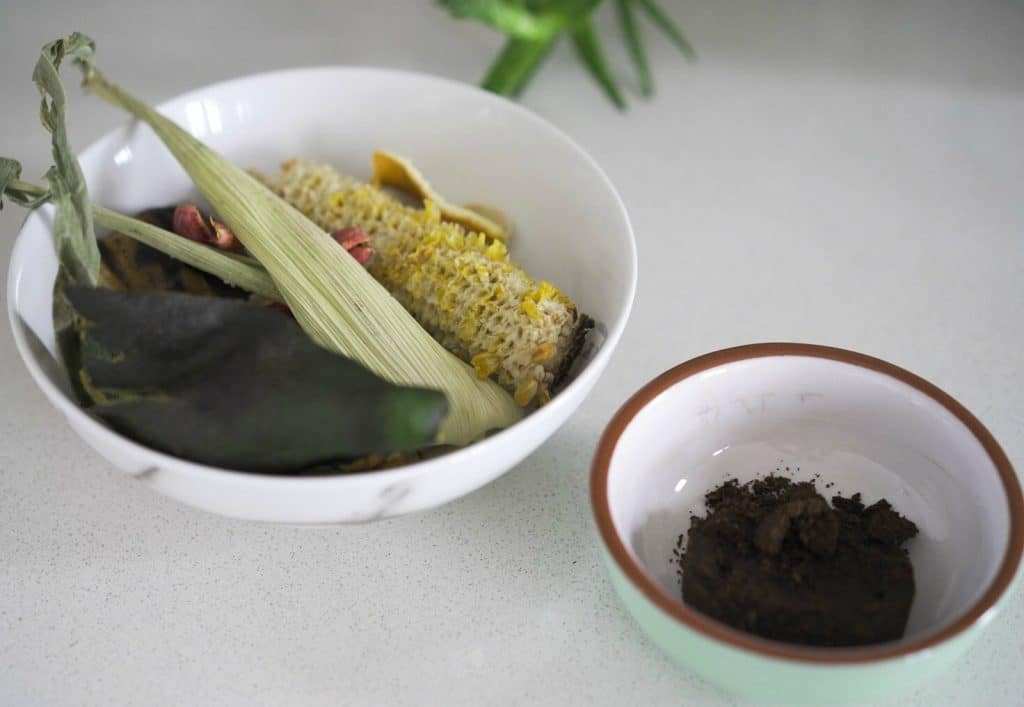
Our introduction to the concept of composting started in London.
We had just been on an epic honeymoon through Africa. The time we spent in some of the most impressive and raw places on earth, like Volcanoes National Park in Rwanda and the Serengeti in Tanzania, delivered the harsh realisation that we, personally, were doing nothing truly positive for the environment and the ecosystems we care so much about.
So we started investigating living more sustainably, using the fantastic online resources available. As a result, we made some important changes, one of which was composting.
We thought we were rather smart because we discovered that “composting” in a flat in the London Borough of Camden is pretty simple. You collect your food scraps (including citrus and bones) in a caddy and leave your bin out on the street once a week for the council to collect it. Nice and easy…
How We Started Composting Again
Then we moved home to Australia. And we quickly discovered that Australia is generally quite behind on making the most of food waste.
We’d become so used to our empty, stink-free waste bins. So much so, that we found ourselves starting our composting journey from scratch. We also moved into a flat. Which as it turns out, makes composting a little harder.
Six months on and there have been many iterations. We’ve certainly got a long way to go but we’re pretty happy with how far we’ve come.
So much so that we are keen to share our current setup and experience with any flat dwellers looking to divert that valuable food waste from landfill, and perhaps even use some nutrient-rich compost on their own mini apartment garden.
How To Compost In A Flat
Aside from meal planning and better use of the full fruits or vegetables to reduce the amount of food scraps we need to get rid of in the first place, we are currently running the following setup:
- Vermicomposting On The Balcony
- Bokashi Bins on the Balcony
- Local Community Garden, via ShareWaste App
Vermicomposting On The Balcony
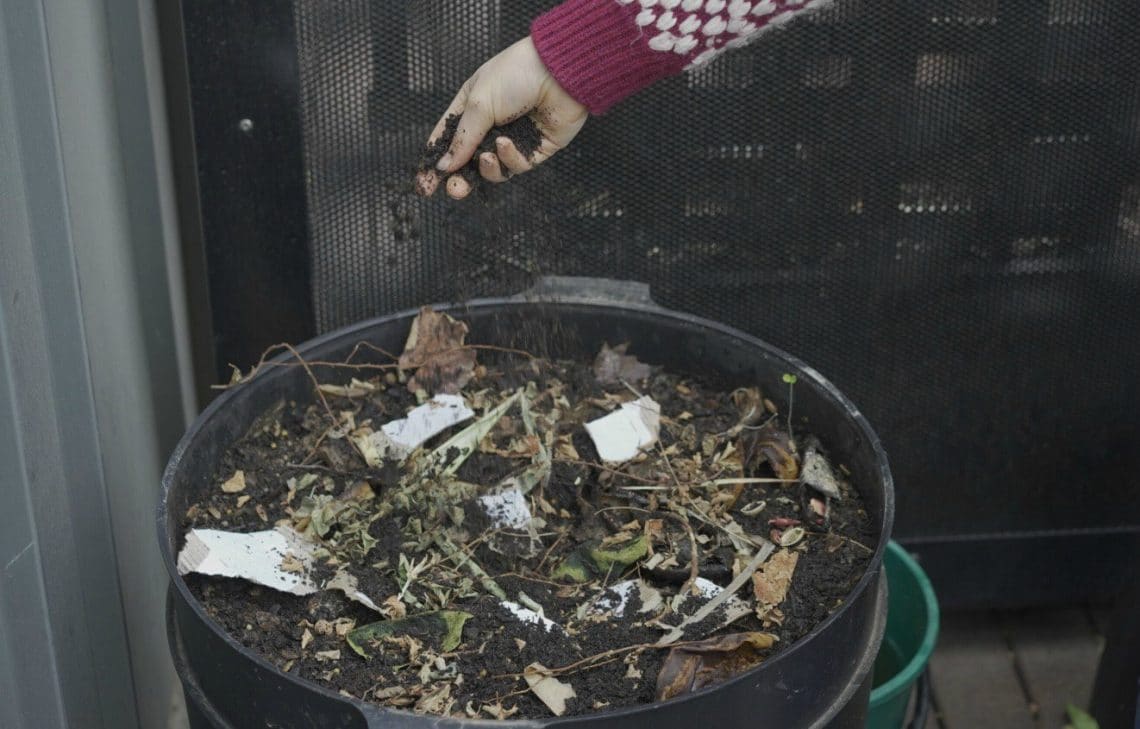
We didn’t want to overcommit to a worm farm until we were confident we wouldn’t kill our worm babies. So instead, we invested in a kid’s ‘learn to worm’ type vermicomposter. I’m pleased to report that we have managed to keep our worms alive, even through a brutal Australian summer!
We love our worms, they make this amazing worm tea (stink-free worm wee) which we use on our plants, both indoors and outdoors. This, along with the worm castings, really seems to make a huge difference to our plants’ health.
Our vermicomposter takes on about 10-20% of our weekly waste (given it’s quite small). And while worms can eat almost anything, there are some scraps they don’t eat so we had to find other solutions to deal with our remaining food scraps.
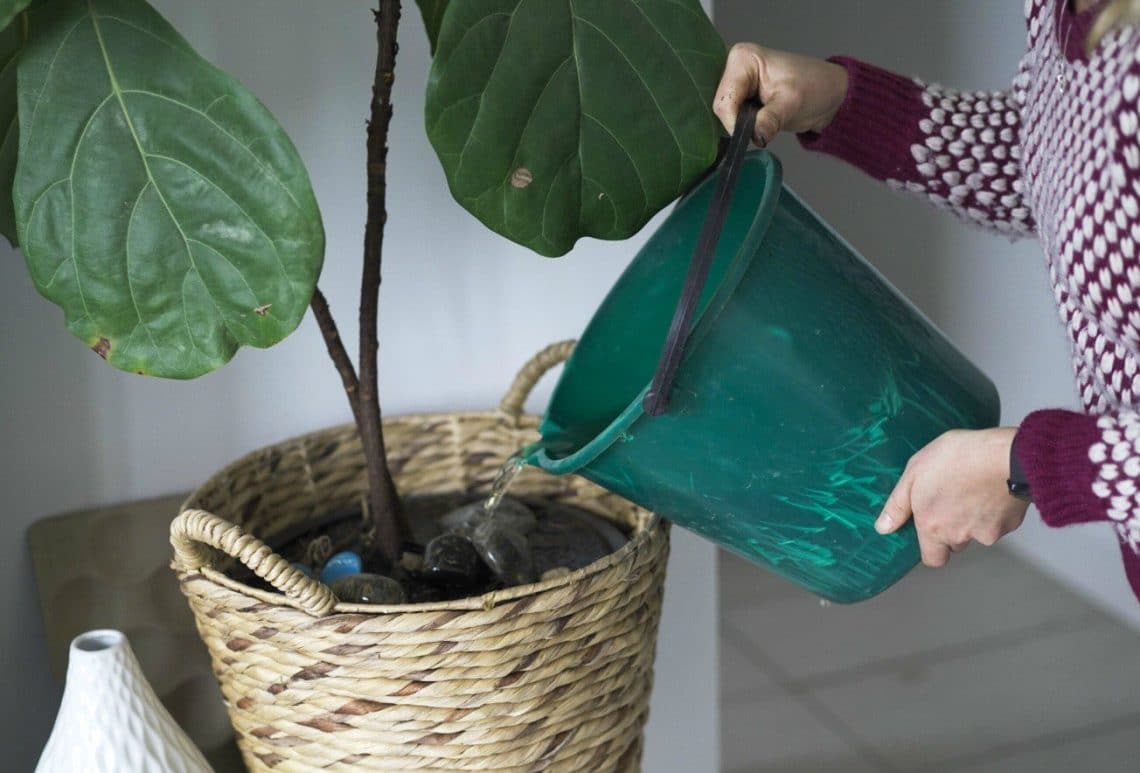
Bokashi Bins On The Balcony

We had grand plans for our Bokashi bins. We were going to keep them inside to make life just that bit more convenient. They’re not supposed to smell. And they’re supposed to convert things like bones, onions, and orange peels (which worms don’t like) into something that worms can eat, or that can be easily composted in a traditional composter.
They indeed do a good job of converting hard-to-compost items. And they take on another 10-20% of our waste. But boy, do the ones we purchased stink!
Our advice after this experience is to absolutely invest in good quality Bokashi bins that have a really, really strong seal. Needless to say, our Bokashi bins have been banished to the balcony and we’re looking for a suitable indoor version.
Worth noting if you want to try this at home. You need at least 2 Bokashi bins (for 2 people) as you need to alternate them. One Bokashi does its fermenting job while the other one gets filled with scraps.
Local Community Garden, via ShareWaste App
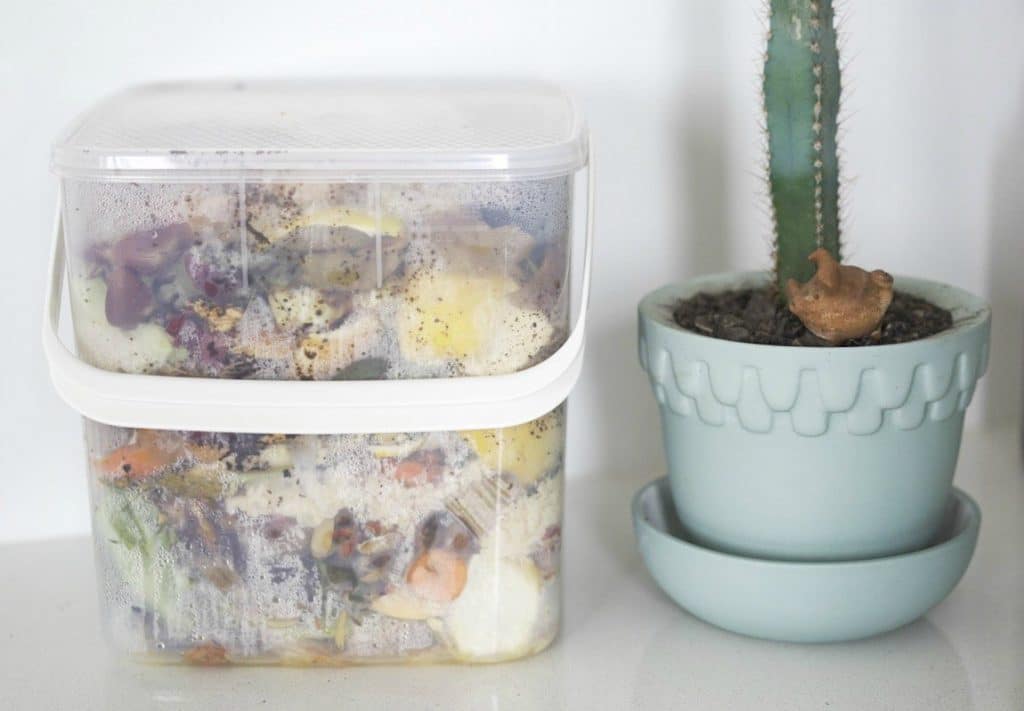
Probably the most impactful discovery for us was ShareWaste, a really helpful sustainability app. This helped us find a community garden close by and in need of food scraps for their big composters.
Our process is to collect our daily scraps in a bowl as we chop and cook. We then transfer the scraps into a big plastic bucket once a day and then take this bucket (with our remaining 70-80% of food scraps) to the community garden once a week.
It sounds like a big schlep but it really isn’t. It’s become part of our habit and the garden is near our local dog park where we take our little pooch anyway.
We were thrilled to find that our family members have also used the ShareWaste app to find people in their local community who are now gratefully accepting their food scraps too. My mum takes her food scraps across the road to her neighbour, and now has a new friend too!
So there you have it! I’d say we are intermediate apartment composters now. We still have some work to do both to reduce our waste but also to process our own.
What’s Next?
This is what we plan to tackle next:
- Indoor Bokashi: We’re on a mission to find the best indoor, stink-free option
- Make vegetable stock: This is a bit of a no-brainer, we just need to build the habit.
- Dog poop composting: We now have a puppy and he is a poop machine. We have a somewhat zero-waste approach now but it could be better.
- Traditional composter: We’re really getting into balcony gardening so we plan to experiment with a traditional composter so we can keep some of that compost goodness for our own garden.
We’ve found that composting in a flat sure is an art. Unless you have heaps of space, you likely need a multi-pronged approach, especially if you don’t have a balcony.
I hope that sharing our experience has helped the aspiring flat composters out there. And if you have found a great way of dealing with food waste, please do share your tips on how to compost in a flat – both with us and those around you!
Thanks so much for this invaluable insight Joy! If you’ve caught the composting bug then I have a few more posts for you to try:
- What you can put in your compost bin
- Guide to the best peat-free compost brands
- Compost-making for beginners
- Why you can’t compost compostable cups at home
- The vegetables you can re-grow from scraps
Found this post useful? Please consider buying me a virtual coffee to help support the site’s running costs.


